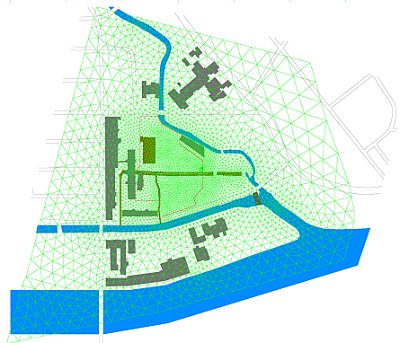Using DYNSYSTEM as a complete modeling system has many advantages over other popular groundwater modeling packages.
One of the major advantages is that of a finite-element grid based model.

DYNSYSTEM finite-element grid

MODFLOW finite-difference grid
Some obvious advantages to finite-element triangular gridding is the ability to use greater discretization in important areas while using large elements in unimportant areas. The rectangular, finite-difference gridding system requires many more elements for comparable discretization.
Also, you will notice that, in order to create anisotropy within the bedrock system of this model, the MODFLOW grid must be rotated to align the grid with the axis of anisotropy. In the DYNSYSTEM model, anisotropy is created with a simple material assignment, eliminating the need for grid rotation and allowing easy modeling of any anisotropy angle.
Here are the same two examples zoomed in to the area of interest on site. These show the comparable grid spacing. Much more discretization is available with the triangular grid.

DYNSYSTEM finite-element grid

MODFLOW finite-difference grid
There are two areas of detail that stress the differences between the two gridding systems. Click within the red boxes to see a more detailed shot.
